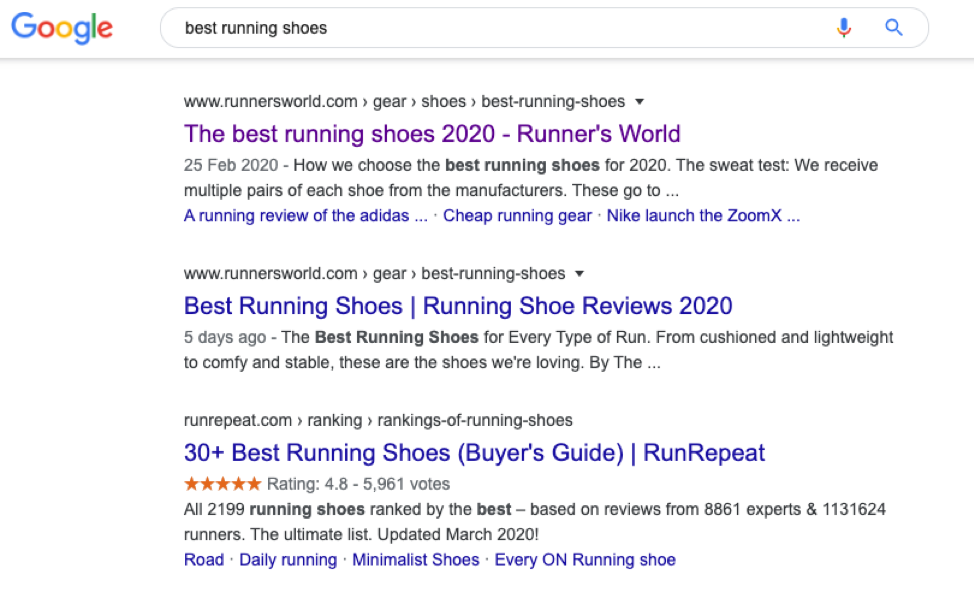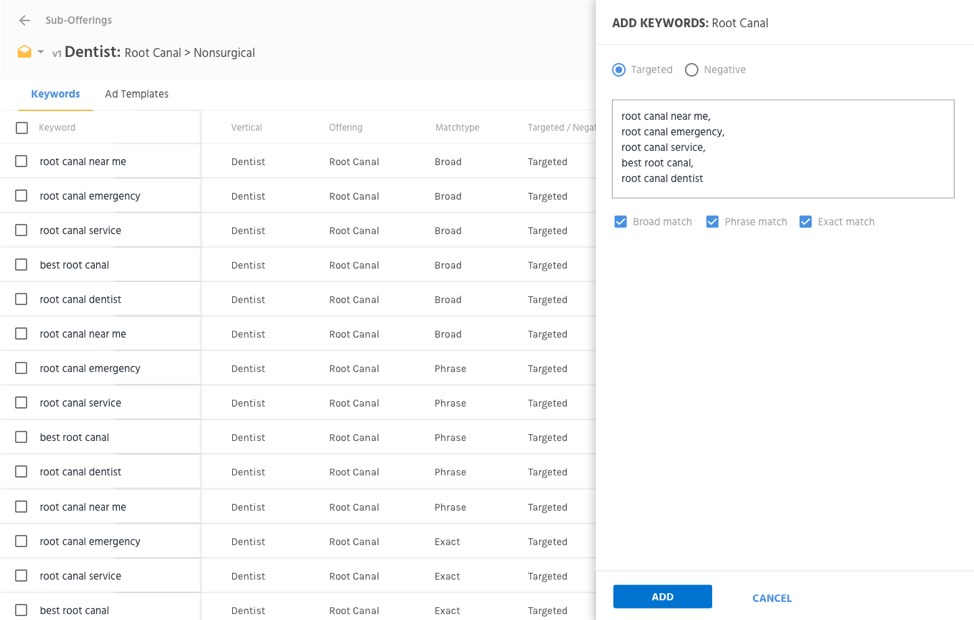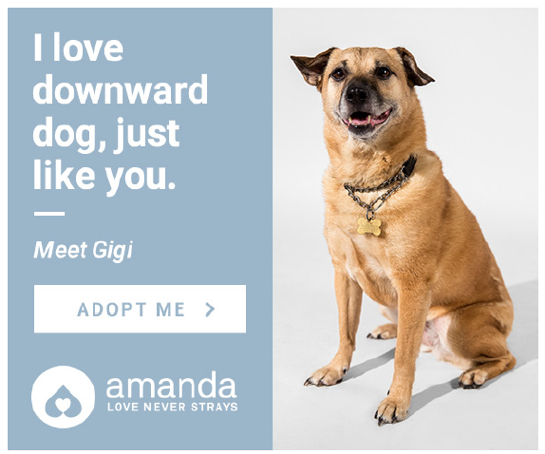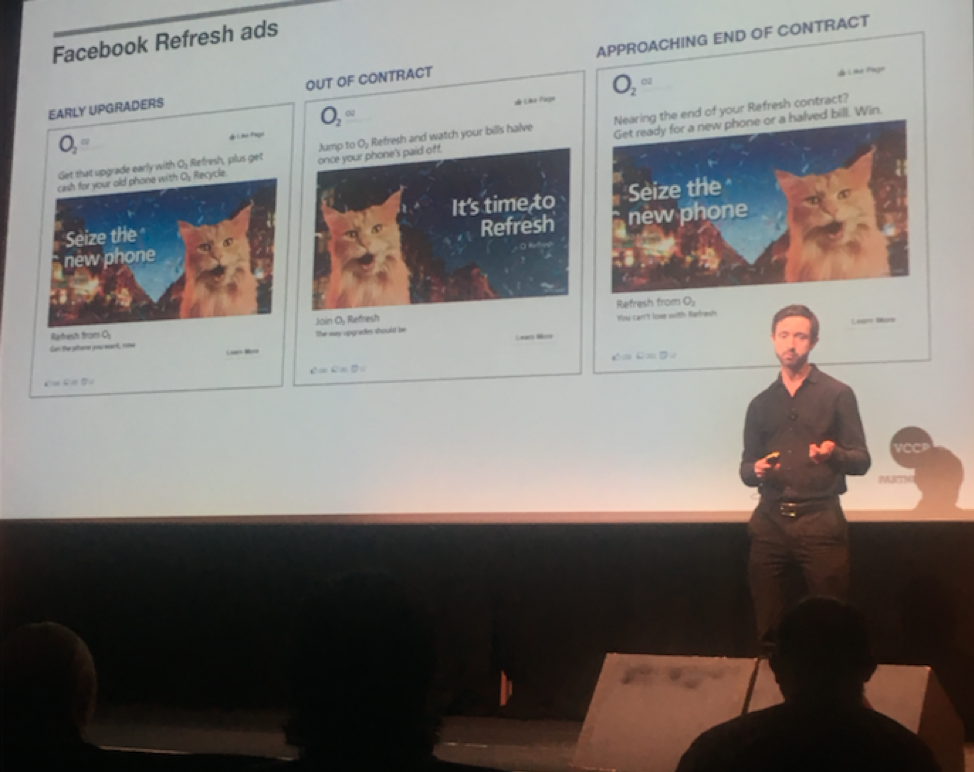Capturing the attention of your audience is a mammoth task. Everywhere they go, they’re overwhelmed with ads from brands vying for their eyes and wallets.
And that’s why, even if your ad creative is better than your competitor’s, you may be showing it to the wrong crowd. In order to place ads where your customers are active and engaged, you must first understand their interests and behaviors.
This is where programmatic advertising comes into play. Through the use of sophisticated algorithms, expansive inventory and new data sources, programmatic analyzes your target audience and serves ads to them in real time.
With programmatic, you can target audiences based on:
- The context of the website they are visiting
- Their keyword searches
- User cookies
- Additional audience data from DMP (data management platforms)
- Geography
This adds a level of personalization to digital advertising that traditional techniques struggle to achieve.
In this article, you’ll learn all about the magic that programmatic advertising brings to acquisition and brand building performance. We’ll outline everything that CMOs and marketing leaders need to adopt, adapt and master to take advantage of programmatic today.
What is Programmatic Advertising? Understanding the Basics
Programmatic advertising is the use of automation and machine learning technology to purchase and display digital ads to segmented audiences in real time. It provides you with access to ad inventory beyond SEM, including major online publications, screens at restaurants or malls, on streaming sites like Hulu and beyond.
It’s important to note that, while real-time bidding (RTB) represents the majority of programmatic, you can also purchase ads directly with a seller or on private invitation-only marketplaces.
Programmatic also allows you to gather data and insights about audiences in order to personalize creative in a captivating way. With this, you can display ads to your ideal customer exactly when and where they’re engaged.
Why Programmatic Advertising Became So Popular
Ads run on the basic principles of economics. The ability to generate customers with a positive ROI is key. But as channels like Facebook rise in popularity, the harder it is to compete.
To succeed in the world of paid media, we’re left with a few options. A common first step is to reduce product pricing. But this only gives you a competitive edge for a short time, and can harm your brand positioning just as fast.
Even if your ads achieve a high click-through-rate (CTR), you must also measure results across the entire customer journey. This means achieving a balance between ad buying on the right channels, to optimizing your ad inventory for your ideal customer profiles.
And that process takes time. Stakeholders often demand fast results. But historically, marketing scalability and performance have been at odds with each other.
This is where programmatic changes the game. As long as you use the right strategy (targeting the right audience on the channels where they’re actively engaged), it allows marketers to buy ads at reduced prices. Ad inventory is matched with your ideal customer instantaneously, allowing you to bid for targeted ad space in real-time. This enhanced system enriches the customer journey, increases reach, maximizes campaign effectiveness and boosts ROI.
Why Should You Use Programmatic Advertising?
So, why should you personally adopt programmatic? The benefits are plenty, but the most common include the following:
- Automation: Campaign creation, placements and even ad creative can be configured ahead of time in an automated manner, allowing you to focus on high-level strategy and bid management.
- Real-time measurement: Everything your ads interact with is measured in real time. This means you can measure results at all stages of the marketing funnel and customer journey.
- Sophisticated targeting: Choose your target audience based on demographics, interests and other unique variables available through DMPs. Plus, you can target based on context. For example, ad inventory on a local vegan recipe site could be the perfect place to advertise your new vegan catering business.
- Expansive ad inventory: With 84% of US digital display ad dollars spent on programmatic in 2019, coupled with the majority of ad inventory not available through traditional channels, you’re missing out on a huge chunk of available ad space. Programmatic enables you to access those bus stop digital screens, CNN display ads, Crackle video ads, and more.
- Return on ad spend (ROAS): More accurate tracking and data collection allows you to double down on what’s working.
- Campaign management at scale: Act on the insights collected from your data over time. Use it to increase performance, delivering highly personalized ads at all stages of the customer journey.
Now you know the benefits, where can programmatic advertising be applied? The answer is that almost any ad format is now available on the programmatic exchange. But for now, let’s check out some trending media types and how they work.
1. Connected TV Advertising
Programmatic connected TV ad buying is moving away from relying on a spray & pray method and competing for expensive, top viewing time slots on cable networks.
You can now meet the viewer where and when they watch at a lower cost. Marketers can use data to fuel video ads that display at the optimal location to the right audience and select how many times a day they view that ad.
Connected TV ad types are considered to be underrated, as networks still rely on the old age auction models. As a result, there’s a great deal of affordable and effective ad space to be claimed. This, along with emerging OTT technology, is revolutionizing what we think of the “TV” advertising channel.
2. Native Advertising
Programmatic native ads are placed in publications and news feeds in real time. Native advertising used to be expensive, as most decisions required human involvement at every level.
Thanks to programmatic, marketers can now take advantage of reduced rates on contextual ad impressions.
Because of the way native ads blend into the content around it, it is known to have a higher CTR than other ad formats.
3. YouTube Video Advertising
Programmatic video offers a huge amount of potential. Especially as YouTube is considered the second most popular search engine in the world.
To capitalize on the popularity of video content, these ad formats have emerged:
- In-display video ads: Commonly seen as the ads that appear within the YouTube results pages
- Out-stream video ads: Often placed within articles on popular news sites
- In-stream video ads: The most common form of video ads. If you’ve ever watched a YouTube video and seen a targeted ad appear mid-stream, you’ll know what these look like
These formats can all be applied to programmatic – with the right tools and targeting. You’ll learn more about the ins-and-outs of the technology and how to get in front of your audience shortly.
4. Digital-out-of-home (DOOH)
DOOH refers to outdoor billboards and signage that are screens rather than print. These are the screens you encounter in restaurants, malls, airports, along highways, and other public spaces.
The benefits are obvious when compared to traditional static billboards as there are no printing costs and there’s greater flexibility when it comes to switching out less effective ad creative.
The high level of visibility you can achieve with DOOH is another reason why everyone’s talking about it. After all, they are in noticeable high traffic spaces where ad blockers don’t exist!
5. Social Advertising
Despite how daunting social media advertising may seem, they work in a similar fashion to the formats we just covered. Platforms that have adopted programmatic technology within their ad platforms include:
- Snapchat
With third-party software, you can integrate channel-specific initiatives into a single platform. Machine learning technology can then take care of bid management and inventory placement across all channels.
How Does Programmatic Advertising Work?
Now we understand what programmatic advertising looks like, let’s paint a broad picture of how exactly it works.
It all starts with the customer. Let’s say someone is in the market for running shoes, and wants to check out some reviews before purchasing. They search for “best running shoes” and land on one of the following results:

And it’s not just search engines where this data is collected. If data is being collected on a digital channel, it can be used as part of your programmatic ad targeting. With the right tools, you can even target users based on their physical location – such as your competitor’s store.
There are billions of these events happening every day. These data-points are collected in real time, which is then acted upon in order to serve the right ads at the right time.
A Technical Overview of Programmatic Advertising
You now understand how programmatic advertising works on a basic level. But how does the underlying technology achieve all of this?
There are four different systems that drive programmatic advertising at scale:
- Ad exchanges
- Demand-side platforms (DSPs)
- Supply-side platforms (SSPs)
- Digital management platforms (DMPs)
Ad exchanges are plugged into SSPs on the publisher side and to DSPs on the advertiser side. It is essentially the digital stock market, where ad inventory pricing is established and media buying happens.
DSPs allow you to buy ads through ad exchanges, while SSPs allow webmasters and media companies to offer their ad space directly to advertisers.
DMPs, on the other hand, collect and analyze user data. This data be used for greater segmentation and understanding user intent.
As mentioned earlier, this all happens in real-time. But how can advertisers take advantage of ad placements as they become available? Well, this is where real-time bidding (RTB) comes in.
RTB is the automation technology that bridges the gap between demand and supply. Ad space is fulfilled dynamically within seconds of an impression. The whole process can be explained in six steps:
- Step 1: A user visits a shoe review site. This intent data is collected as part of the network that the website is part of. For example, if they use the Facebook Pixel to track Facebook Ad performance, that data will become part of the network.
- Step 2: SSPs leverage this data, offering ad placements that DSPs can use via an ad exchange
- Step 3: DSPs then enrich this data from DMPs. The DMP collects user data – from interests to behavior – and supply them to DSPs to use for dynamic targeting.
- Step 4: The DSP then calculates the bid value of the audience the buyer is targeting
- Step 5: The SSP collects multiple bids and picks a “winner.” This is often defined by bid amount, but can also come down to relevancy, previous ad performance and other variables.
- Step 6: Once a bid is accepted, the ad is displayed
The steps above happen in fractions of a second. Ads are placed as efficiently as the data is collected and passed on.
How to Implement Programmatic Advertising
With an understanding of how programmatic advertising works, let’s look at how to build a strategy as part of your overall marketing approach.
Here, you’ll learn a strategic approach to implementing programmatic into your existing paid media strategy.
Step 1: Ask The Right Questions
Before doing anything, you must first make smart, strategic decisions. In other words, why even implement new programmatic technologies in the first place?
The answer to this question is often simple, but they’re important to define. Some of the most common reasons include:
- To increase acquisition from existing efforts
- To reduce the amount of time spent on campaign management
- Elimination of bid management and other laborious activities
- To focus more on strategy and creative
Another important question to ask at this stage is: does our existing strategy support this technology? In other words, are you using it as a fix to an unrelated problem?
For example, if you’re seeing a decrease in conversions, the problem may not lie in your advertising. Changing market trends, or a lack of product positioning in competitive markets, might be the real cause. Be sure to diagnose those issues before moving on.
Step 2: Define These Five Core Areas
Now you’re clear on why you’re pursuing programmatic, you must define the following areas:
- Target audience
- Ad inventory
- Ad creative
- Metrics and benchmarks
- Data and insights
It all starts with your target audience. Ultimately, who are you trying to attract?
This is where defining your ideal customer personas is invaluable. For each segment of your target audience, you should collect the following:
- Demographics: What do these people look like, and what stages of the customer lifecycle are they currently in? Include data on age, location, income etc.
- Interests: What common interests do they share? What about their goals, desires and common challenges? These attributes will eventually feed directly into your programmatic strategy
- Behavior: What actions do they take before making a purchase? What events cause them to become buyers?
With your audience defined, think about ad inventory (i.e. where you’ll find that audience.) For example, most consumer-facing brands will want to serve ads on Facebook, Instagram and Google Ads, as a large portion of their audience are likely to be active there.
To get your customer’s attention, you’ll need engaging and eye-catching ad creative. If you’ve used paid media to acquire customers for some time, you’ll likely already know what resonates best with your audience.
This is where programmatic can provide additional power. As data is collected from top-performing ads and campaigns, machine learning technology (like dynamic display advertising) will build new creative based on what works best.
Over time, metrics are measured and performance benchmarks are set. These can then be used for future experiments, as you’ll have an indication of how your campaigns should perform across the board.
Optimization at this level extends beyond creative. As DMPs collect data and insights, they’ll act on these learnings to optimize ad bidding and budget distribution.
Then, the cycle continues. The more you learn about your audience and what they respond to (i.e. how they engage with your creative), the more you can refine your targeting. Paid media works like a flywheel, and programmatic is there to make it easier to manage and more efficient.
Step 3: Evaluating and Selecting Programmatic Ad Vendors
With a structure in place, you’ll need the right technology to support it. There are several options out there, each with their own features and track record.
First of all, you must decide whether or not you’ll be working with DSPs directly, or investing in a trading desk. For media teams with plenty of resources, working with several DSPs isn’t unheard of.
However, each DSP has their own strengths and weaknesses. In order to manage each of them effectively, many brands and agencies look to invest in a trading desk. This brings the accessibility of several DSPs together while capitalizing on the benefits of automation that programmatic has to offer.
When evaluating new DSP or trading desk vendors (which goes for any paid media technology), look for the following information:
- Cost: What is the overall cost? Are there set up fees? Make sure you have as much information on pricing as possible.
- Transparency: How do they ensure accurate data and reporting? What measures does each vendor put in place to ensure clicks come from real human beings?
- Business model fit: Many platforms niche down into specific industries or business models. If you’re growing a SaaS company, you’ll want to avoid a proposition tailored to local businesses.
- Data: What is the quality of the data each vendor offers? What data sources do they use, and do they have the capacity to integrate with other platforms you currently use?
- Ease of use: Do they provide an intuitive interface? Look for a platform that doesn’t get in your way with poor user experience.
- Support: What level of support do they offer? Is the platform self-service, or do you have an account manager helping you out at every step of the way?
- Reporting: What metrics are measured? How powerful and granular are their reporting features overall?
You’ll also find some vendors offer features that make the entire ad management process much easier than others. If having a robust, end-to-end service is important to you, find a DMP that offers the right tools at each stage.
For example, if scaling up your campaign setup is important, look for a vendor that gives you the tools to create and adapt templates:

Shortlist brands that offer these features, then run through the process outlined above.
3 Brands Successfully Using Programmatic Advertising
We’ve talked a lot about high-level concepts of programmatic, along with the tools that make it possible. The question is, how does it look in action?
Let’s check out how some of the world’s biggest brands are implementing programmatic to their advantage:
1. Zalando
Much of Zalando’s success comes from their investment into programmatic advertising. Using a proven data-driven marketing approach, they adopt programmatic to serve the right ads to the right audience.
Take the video ad below, for example. Here, the overall creative is aimed at a specific segment of a younger audience. Using the tools covered in this guide, they can serve this creative to those individuals with high accuracy:
2. Amanda Foundation
Amanda Foundation is a non-profit that helps shelter animals get the home they deserve. They leverage the power of programmatic to customize their advertising to an unimaginable extent.
Using DMP to understand user traits, they use data information to match them with the right type of dog. For example, someone with an interest in yoga will see the following ad:

Imagine, you being an outdoor person, you love dogs and then you see this ad that displays an athletic dog. For Amanda Foundation, that’s relevance, scale and speed done right.
3. O2
For many marketers, a 10% increase in conversions is considered a wild success. So you can imagine how the team at O2 must have felt when they achieved a 128% improvement on ad performance.
Their secret? Creativity and a system that aggregates usage data, device location, etc.
To achieve this, O2 leveraged device data (usage, location etc.) to target users that were considering buying a new phone. They were able to build engaging campaigns, pushing the following to a prospective customer:
- Value of their current phone if they exchanged it
- The best offer for an upgrade
- Where the nearest store was

They ran more than 1,000+ variants of the campaign based on the user’s device and location, which got them great results.
Conclusion
Programmatic success comes down to the data. The tools you choose must be able to not only collect customer insights, but act on it in meaningful ways.
That’s what makes programmatic advertising so attractive. As more data is collected on your audience, how they engage with your creative and results, the better your advertising becomes.
As new channels emerge and adopt machine learning technologies, now has never been a better time to adopt programmatic.
Images:
Featured image: Unsplash / Samuel Chenard
Image 1: Google
Image 2: Acquisio
Image 3: Chris Mead
Image 4: Econsultancy



